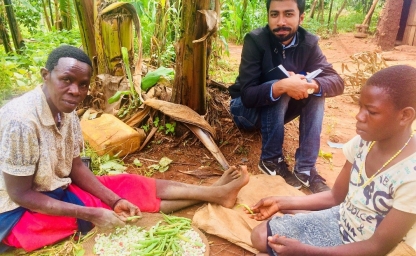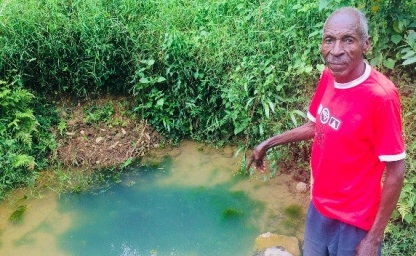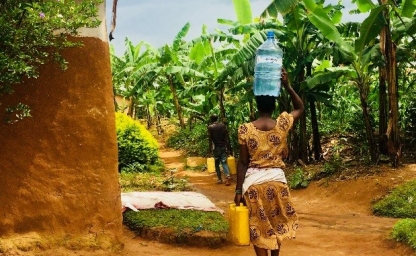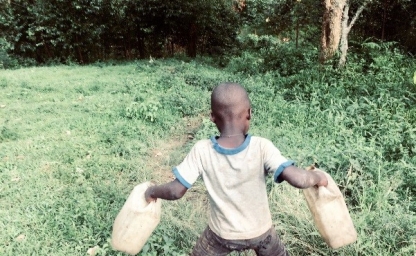Blog: Water governance and me in Bushenyi-Ishaka, Uganda
Author: Ramkrishna Paul
Coming from India, Uganda reminded me of the situation back home, especially in terms of the chaotic nature of traffic in Kampala, where I stayed for a week prior to travelling to Bushenyi-Ishaka. In these initial days, I had meetings with my local mentor from Makerere University and a few meetings on the logistics of my research with representatives from the National Water and Sewerage Corporation (NWSC). These Ugandan organizations are partners in the SMALL project, a collaborative research project on water provision in small towns under which my research falls. While travelling to Bushenyi-Ishaka the first thing that I noticed were the banana plantations and the hills on both sides of the road. In Bushenyi-Ishaka I moved into my new ‘home’, a small house located in the valley. The next morning I woke up to the sound of a rooster crowing outside of my window, rather than the alarm clock on my mobile phone, which made me realize that I was no longer in Delft but had moved to a small town in Uganda.
That day I went to the local branch office of NWSC, where I was given a working place for the coming next three months of my stay. Having initial meetings with local NWSC employees helped me understand how water is distributed in the town. My next task was to identify two areas, one vulnerable area and one relatively less vulnerable area in the sense of water related risks, for my in-depth empirical study. For this, I decided to select two cells, which are the lowest form of administrative units within the municipality, as my focus area. Accordingly, I developed a selection criteria based on factors such as urban-rural characteristics of the area, frequency of water-borne disease in area, type of water availability and factors related to political representation. This criteria helped me shortlist ten most vulnerable and ten less vulnerable areas. Ideally, I could have selected any of the shortlisted areas for the remaining part of my research, as each area has its unique characteristic and is different from others in terms of water risks experienced by the users. In order to have a better feel of the context and also to observe how people responded to me as an outsider and their willingness to participate in my research, I made reconnaissance visits in the shortlisted areas. Depending on the observations from the visits and preliminary discussions with the residents, I selected Masya, a more rural oriented area located in the peripheral parts of the municipality, and Katungu, an urbanized area located in the central part of the town.
In the past month, being on field and interacting with water users has been the most exciting part of my research so far. Until now I had a few in-depth interviews with residents of Masya to understand how they access water and the kind of risks they are exposed to or contribute to produce. Most people in Masya practice agriculture, either subsistence farming or producing for the market. Banana (matooke) is the staple food, but they also grow maize, cassava, coffee, etc. These crops are solely rain fed even though sometimes the harvest is reduced as result of a shortage of rainfall. In terms of water usage, people in Masya depend on four sources of water, two protected springs and two unprotected springs, all located in the valleys. People face a lot of problems and are exposed to various risks, while accessing water. For instance, some users need to walk for over two hours to fetch water in their jerry cans. While some are too old to fetch water, the kids are too young to fetch water. During monsoons, the muddy roads become slippery and the steep climb is difficult for the water users. In terms of water quality, boiling is the only form of water treatment available for most residents with several exposed towards water borne diseases.
In the coming next phase of my research, I will be continuing my interviews and simultaneously analyse the kind of risks water users are exposed to, its production and distribution among various groups of users. Later I will also compare and contrast the findings of water service provision in Bushenyi-Ishaka with the literature available on distribution and production of water related risks in other small towns as well as in urban and rural centres.




